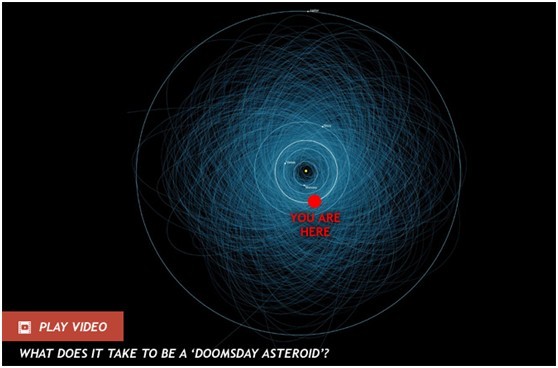Welcome to Our 'Killer Space Rock' Neighborhood
USINFO | 2013-10-08 14:31

A picture is usually worth a thousand words; this picture is worth over a thousand potentially hazardous asteroids.
In an effort to convey how many large asteroids buzz through the inner solar system (and, presumably, to scare the crap out of us) NASA has created a handy dandy overview of the orbits of all known potentially hazardous asteroids, or PHAs. The result? It’s looking pretty crowded out there. View the full resolution version here.
But fear not — well, don’t fear too much — these space rocks are “potentially” hazardous, not “they’re gonna hit us!” hazardous.
Top 10 Ways to Stop an Asteroid
PHAs are classified as large asteroids at least 140 meters (460 feet) wide that follow orbits passing within 7.5 million kilometers (4.7 million miles) of Earth. It has been calculated that any space rock of this size or bigger can give Earth a very bad day should we be in the wrong place at the wrong time. In short, we’re looking at regional to global damage should one of those beasts hit — hence the much-used “killer space rock” moniker. NASA has been tasked with tracking down the majority of these objects, a feat that NASA’s Near Earth Object Program is tackling.
Apart from being a great advertisement for asteroid impact mitigation strategies, this rendering of PHA orbits demonstrates the high degree of precision that goes into tracking and predicting future orbits. For example, we know that none of these particular space rocks will hit Earth for the next 100 years or more. Beyond that, the orbital positions of asteroids become uncertain due to gravitational interactions with the planets and other forces such as the Yarkovsky effect.
Of course, the orbital path lines of the asteroids are many thousands of times thicker than the width of the asteroids they represent — otherwise no lines would be visible. This adds to the impression that interplanetary space is more crowded than Grand Central Terminal at rush hour. Fortunately for us, space is a very big place and, for the most part, the majority of PHAs will be nothing more than a blip on our radar.
But it’s all down to statistics — whether we’re safe for the next hundred or 10,000 years, we live in a cosmic shooting gallery where, eventually, our planet will get hit by something big.
Share this page